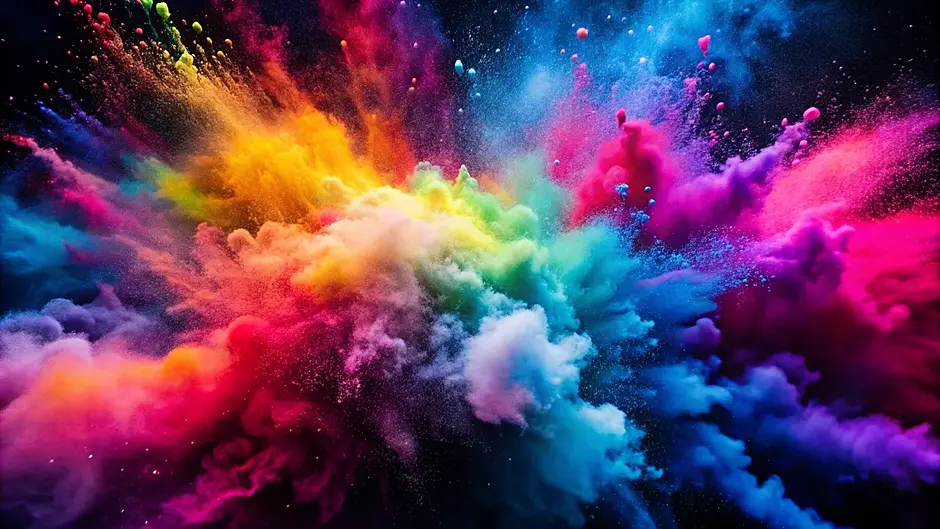This article was featured in our Home & Garden Autumn/Winter 2024 supplement – you can read the full supplement here!
COLOUR psychology is the study of how different colours can affect our emotions, behaviour, and perceptions. For example, red is often associated with energy, passion, and excitement, whereas blue is seen as instilling calmness, peace, and trust.
Colours such as yellow, red, orange are generally considered stimulating and energising. They can make a space feel more welcoming. However, an excess of these colours can sometimes be overwhelming and may create a sense of anxiety. Cool colours like blue, green, and purple are often associated with relaxation and calmness. They can create a more peaceful and serene atmosphere.
The application of colour psychology, especially in the domestic setting, can help you make more conscious decisions when selecting the colour schemes for each of the rooms in your home. By choosing each colour carefully, you can create a home that works for you and makes you feel every emotion that you want to achieve.
UK-based interior design expert Zoe Warren (priceyourjob.co.uk) is an expert in colour psychology and offers the following information:
When decorating your home, consider the desired mood you want to create in each room. For example, if you want to create a relaxing and calming atmosphere in your bedroom, you might want to choose soft shades of blue, green, or lavender. These colours can help you unwind and get a good night's sleep.
If you want to create a more stimulating and energising atmosphere in a room such as your home office, you might want to choose brighter colours like yellow or orange. These colours can help you feel more focused and productive.
In your living room, you will probably want to create a warm and inviting atmosphere. Consider using a combination of warm and cool colours to achieve this. For example, you could paint the walls a neutral colour like beige and add some pops of colour with various furniture pieces, artwork, or throw pillows.
Colour in different rooms
The best choice of colours can vary significantly depending on the specific room in your home. Each room serves a different purpose, and the colours you choose can help to create a suitable atmosphere for that purpose.
Kitchen
The kitchen is a place where people gather to cook, eat, and socialise. Bright and cheerful colours can help to create a stimulating and inviting atmosphere. Consider using warm colours like yellow, orange, or red to stimulate your appetite and create an sense of warmth and energy. However, be careful not to use too much red, as it can sometimes be overwhelming.
Bedroom
The bedroom is a place for relaxation and sleep. Calm and soothing colours can help you unwind and get a good night's rest. Consider using some soft shades of blue, green, or lavender. These colours can create a peaceful and serene atmosphere. Avoid choosing any bright and stimulating colours in your bedroom, as they can make it difficult to relax.
Living room
The living room is a place for socialising, relaxing, and entertaining guests. A combination of warm and cool colours can create a welcoming and inviting atmosphere. Consider using neutral colours like beige or grey for the walls and adding some pops of colour with furniture, artwork, or throw pillows.
Home office
If you have a home office, you might want to choose some colours that promote focus and productivity. Bright colours such as orange or yellow can help to stimulate your mind and increase your energy levels. However, too much of these colours can be overwhelming, so consider adding some calming elements in the room as well to balance them out.
Bathroom
Your bathroom is a place for relaxation and rejuvenation. Calm and soothing colours can create a spa-like atmosphere in here. Consider using some shades of blue, green, or grey. These colours can help you feel more relaxed and refreshed. Avoid any bright and stimulating colours in your bathroom, as they can be overwhelming and disrupt the peaceful atmosphere.
Children's rooms
Children's rooms should be very fun and playful. Bright and cheerful colours can create a stimulating and imaginative atmosphere. Consider using colours that your child enjoys, such as bright blues, greens, yellows, or pinks. However, avoid using too many bright colours, as it can become overwhelming for children.
Natural light
The amount of natural light in your home is a significant factor when you’re choosing colours. Darker colours can make a room feel much smaller and darker, especially if there is not a lot of natural light. Lighter colours, on the other hand, can make a room feel much larger and brighter. If your home has a lot of natural light, you may use darker shades to create a more dramatic and intimate atmosphere. If there is limited natural light in your home, lighter colours can help you to brighten up the space.
Experiment
The best way for you to determine which colours you like best is to experiment with them. Don't be afraid to try out different colours in different rooms. You may be surprised by the colours that you find appealing. Consider painting small test patches on the walls to see how the colours look in different lighting conditions.
Colour is all just about aesthetics. Colours are also a powerful tool that can significantly impact the atmosphere and mood of your home. By understanding the psychology of colour and implementing these tips, you can completely transform your living space into a haven that reflects your personality and caters to your emotional needs and well-being.
This article was featured in our Home & Garden Autumn/Winter 2024 supplement – you can read the full supplement here!






